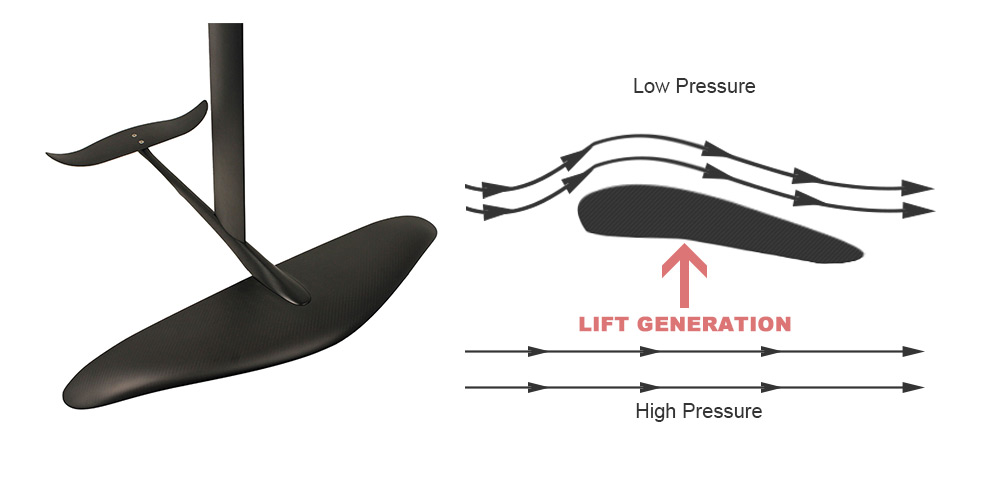How Hydrofoils Work?
The intrigue surrounding the mechanics of hydrofoils has piqued the curiosity of many water enthusiasts. In recent times, hydrofoiling has surged in popularity, evolving into an exhilarating pursuit across diverse aquatic disciplines. The essence of hydrofoil technology lies in the ingenious concept of elevating a watercraft's hull above the water's surface, enabling it to glide atop hydrofoil wings submerged beneath. This innovative approach bestows upon watercraft an array of benefits, including heightened performance, increased velocity, and an unparalleled aquatic experience.
The Mechanics of Hydrofoils
At the heart of hydrofoil operation are the fundamental principles of fluid dynamics and lift creation. The design of hydrofoils is geared towards lifting a watercraft's hull clear of the water's embrace as it gains momentum. This strategic elevation serves to diminish resistance, allowing the vessel to traverse the water with greater efficiency and grace. Here's a closer look at how hydrofoils operate:
Lift Generation:
Hydrofoils are furnished with wings or foils, which bear a striking resemblance to the wings of aircraft but are tailored for underwater functionality. As water courses over these hydrofoil wings, it engenders a pressure disparity between the upper and lower surfaces of the wing. This pressure differential, akin to the lift generation phenomenon observed in airplane wings in flight, culminates in the generation of lift.
Angle of Attack:
The angle at which the hydrofoil is positioned concerning the water's surface is termed the angle of attack. By manipulating this angle, hydrofoils can regulate the amount of lift they produce. Elevating the angle of attack amplifies lift but also amplifies drag, striking a delicate balance.
Speed and Velocity:
The efficacy of hydrofoil technology comes to fruition as the watercraft gains speed. In the course of its forward journey, the water washes over the hydrofoil wings. At a certain threshold velocity, the lift generated by the hydrofoils eclipses the watercraft's weight, prompting it to ascend above the water's surface.
Diminished Drag:
Once the watercraft is lifted, gracefully surfing atop the hydrofoils, the conspicuous reduction in water resistance begets heightened velocity and enhanced fuel economy. This outcome holds true whether it be for boats, sailboats, or even surfboards.
Stability and Mastery:
Hydrofoil systems often encompass supplementary components such as stabilizers and control surfaces. Stabilizers are instrumental in preserving equilibrium, averting unwarranted rolling or yawing movements. Meanwhile, control surfaces empower the pilot or rider to fine-tune the hydrofoil's orientation for superior command.
Hydrodynamics:
The precise engineering of hydrofoil wings, spanning their contours, dimensions, curvature, and the overall configuration of the hydrofoil system, emerges as a pivotal factor determining watercraft performance and stability.


Comments
Post a Comment